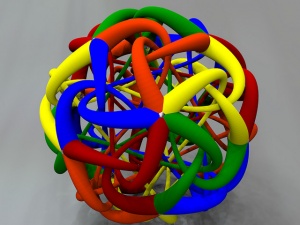Using Open Resources for Self-Directed Learning/Design blueprint
Contents
Metadata
for example, course name, level of study, number of credits, or notional learning hours
- Notional learning hours: 30 hours
- Duration: X weeks, X hours per week
- Assessment: X hours
- Formal credit option: Yes
- Course:
- Credential:
- Level: undergraduate
Target audience
The course is designed for anyone interested in understanding and developing the skills needed for self-directed and lifelong learning. For example:
- Teachers working in the school sector.
- Lecturers working in community colleges, polytechnics, and universities.
- Trainers working in the vocational education and corporate training sectors.
- Pre-service teachers, lecturers, and trainers.
Prerequisite knowledge
Anyone is free to participate in this course. An Internet connection and basic web browsing skills are recommended. Also,
- the ability to create a blog and microblog account (instructions and self-study tutorials are provided), and
- working knowledge of office software and file management.
Knowledge of open educational resources and Creative Commons licenses is needed. However, learners without detailed knowledge of OER or Creative Commons licenses will be able to successfully complete the course with self-study of these concepts.
Learners aiming to submit assessments for formal academic credit will need to meet the normal university admission requirements of the conferring institution (e.g., language proficiency and school leaving certificates). Learners aiming for the 3rd year Bachelor level are advised to have completed the majority of their 2nd year level subjects to have sufficient capability and experience for preparing assignments for 3rd year level of Bachelor study.
Course aims
In this course you will:
- engage in self-directed learning, thus developing the ability to plan learning goals and outcomes, and use strategies to meet the designated learning outcomes.
- This requires learning how to monitor progress and evaluate when the learning outcomes are met through a process of self-assessment. To become a self-regulated learner you will demonstrate attributes, such as motivation, goal-oriented behaviour and reflection.
- interact with others within a connectivist model of learning.
- This involves social networked learning using Web 2.0 tools and OER. Learners learn how to access and manage open educational resources to support the study pathway, explore the legal and ethical use of online sources, and engage in critical analysis of resources.
Learning Outcomes
After completing this course, students will be able to:
- Explain the benefits of self-directed learning.
- Describe how self-directed learning fits into their degree plans.
- Apply Bloom’s taxonomy to the development of learning objectives related to their area of study.
- Summarize copyright and fair use issues and apply legal principles.
- Distinguish among openly available, openly licensed, and copyright-protected educational resources relevant to their field of study.
- Analyze resources critically.
- Compose a self-study plan aligned with a particular course area, resulting in a study guide.
- Explain the need for assessment and compose an assessment plan.
- Collaborate with other students appropriately to promote learning.
- Relate self-study experiences to the portfolio process.
Overview of the delivery model
Existing OERs will be used for course content. A “discovery pedagogy” is used to encourage learners to find open educational resources to support their learning pathway. A connectivist model of learning is used whereby learners use social networking tools to source information and interact with others as they develop their knowledge.
The course promotes a learn-by-doing approach. It will comprise a series of learning pathways designed to achieve the stated learning outcomes, incorporating learning challenges for each pathway where learners practice and refine their skills. Integrated activities for peer-learning interaction (microblogs, blog posts, and discussion forum posts) are embedded in the course design. Where appropriate, interactive case studies will be used to facilitate learner-content interactions and simulated dialogue with course developers. The course will also include digital skills challenges for searching, adapting, and publishing OER images and rich media for inclusion in the materials. Learners will also publish their own course websites.
The course presumes average computer literacy using standard office applications, web-navigation, and the ability to register accounts for open web services. Digital and social media literacy skills relevant to finding and remixing OERs and peer-sharing of the learning journey through collaborative design will be embedded in the course with corresponding self-study support tutorials to promote capability development in these areas.
Assessment strategy
You are asked to document the process of self-directed learning and collaboration using a blog (portfolio) and other Web 2.0 tools. You also need to prepare a study guide and evidence of self-assessment of and reflection on the process of self-directed (self-regulated) learning. The portfolio will demonstrate development of capability in accessing and managing digital information and skills for self-regulated learning.
Summary of interaction strategies
including student-content, student-student, and student-facilitator interactions and related technology requirements
- Student-content interactions
You will work through a series of learning pathways designed for independent study. Each learning pathway includes:
- a stimulus video signpost to orientate you to the main topic;
- one or more learning challenges - e-Learning activities that encourage you to prepare outputs and share your reflections and experiences with fellow participants.
- The learning challenges will help you to develop skills in accessing and using digital information and to become a collaborative and self-regulated learner. They will also serve as building blocks for the final course assessments.
- Student-student interactions
You will collaborate and share your ideas and outputs using a number of Web 2.0 technologies. These will be harvested using an aggregated timeline for the interactions. For example,
- microblog activities and posts;
- discussion forum posts;
- personal blog posts and comments; and
- Ask OERu, a community-based question-and-answer forum.
- Student-support interactions
You will be encouraged to use a peer-support question-and-answer forum for addressing support questions. Self-study help tutorials will be provided for the main technologies used in the course.
